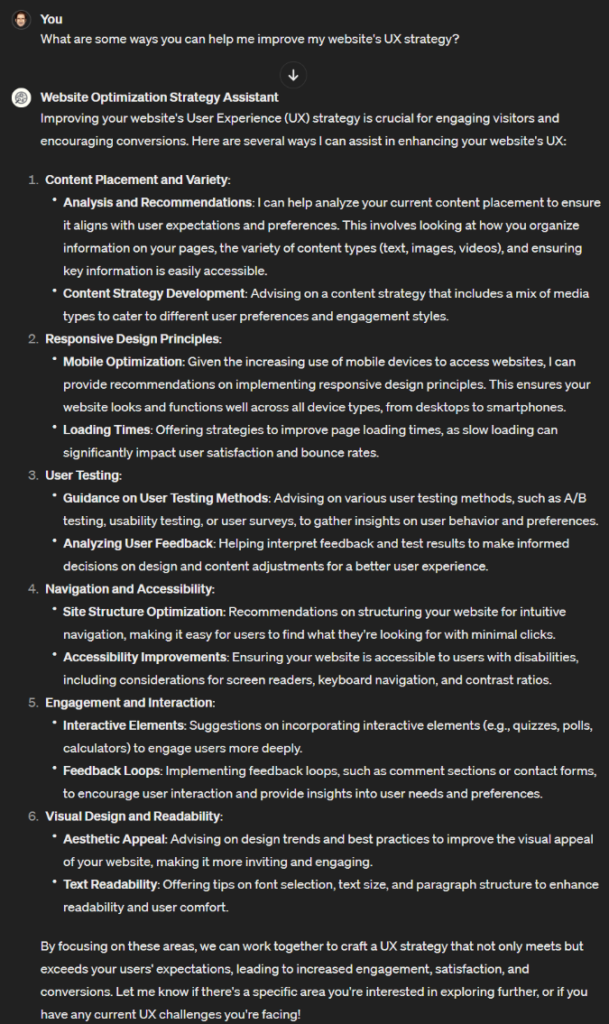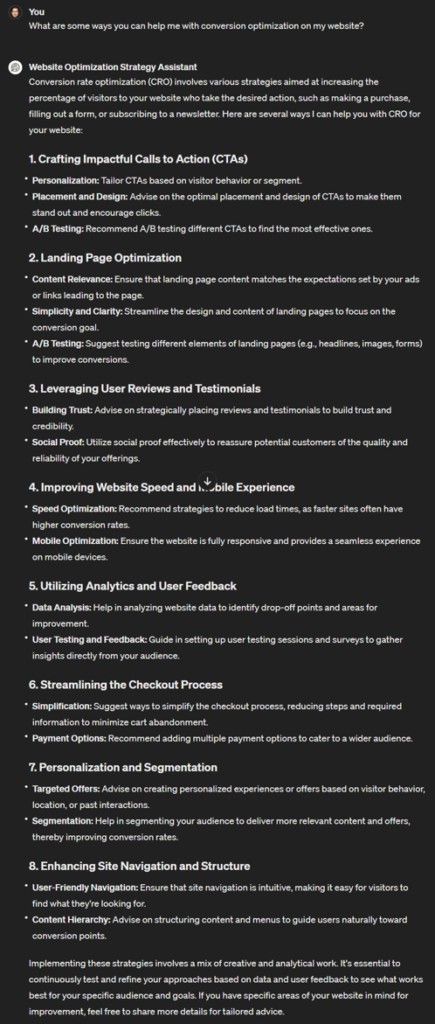Developing WOSA’s Focus on SEO, UX and CRO
In my intro post to the WOSA GPT, I touched on the fact that it was built to focus on what I consider to be the “three core elements” of successful website optimization: search visibility, user experience and conversion optimization.
These are the pillars around which I base my strategic approach. Each one speaks to an essential aspect of ensuring users can easily find, use, and convert on your website. My goal in designing this GPT is to create a comprehensive assistant that covers each of these pillars.
I went through a few iterations before I felt ready to launch the WOSA publicly, and as I mentioned in my initial post about it, I plan to update it with more detailed and specific knowledge on a consistent basis. For now I thought I’d share the foundation on which these updates will be built.
Search visibility, or SEO
This is the area into which I put the most detail and focus, something I imagine will continue as SEO strategy evolves with the rapid advancements in AI. I tried to be as comprehensive as possible here, since that’s how I would describe SEO in a nutshell: comprehensive, not complicated.

User experience
It’s long been my philosophy that SEO needs UX to succeed; without it, it’s just a car on blocks. All the search visibility in the world doesn’t mean a thing if the majority of users stop by and bounce without bothering to browse. An effective UX strategy ensures that users’ expectations for what they came to find are met with no friction.

Conversion optimization
The last piece of the puzzle is arguably the most crucial. Good SEO leads users to your website and a good UX keeps them there, but successfully optimizing content across the browsing journey is what will ensure they’re able to accomplish the goal they clicked for in the first place.

As you might notice, there’s a bit of overlap in some of the categories, specifically between UX and CRO. The updates I’ll be making over time should start to help it offer more specific insights for each of the core elements of website optimization. One thing I’m very interested in is the knowledge feature in GPTs, which allows you to “upload files containing additional context” for training your GPT – that’s definitely something I’ll be exploring and reporting on in the weeks to come.
If you have any thoughts or suggestions for additions to the WOSA thus far, drop me a line and let me know!
Leave a Reply